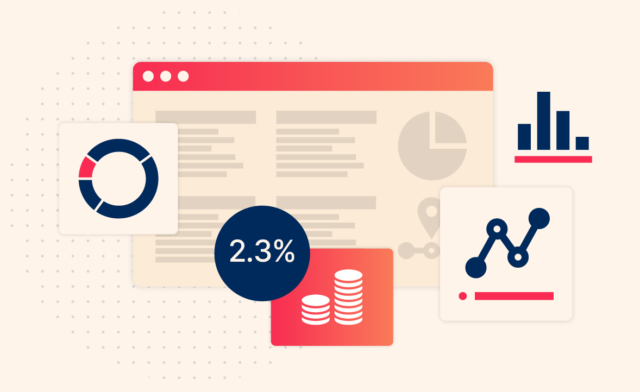How to Convince Stakeholders to Invest in AI Recruitment Tools

The promise of AI in recruitment is tantalizing: faster hiring, reduced bias, and a more efficient process overall.
Yet, convincing stakeholders to invest in these tools often feels like navigating a minefield of skepticism and budget constraints. How do you move beyond the buzzwords and demonstrate the tangible value of AI recruitment? Here’s a strategic approach to win over even the most hesitant stakeholders.
1. “Time-to-Fill? More Like Time-to-Fill-My-Patience! Start with the pinpoints
Don’t begin with the technology itself. Instead, paint a vivid picture of the current recruitment challenges. Quantify these problems wherever possible.
Time-to-fill: “Our average time-to-fill is 60 days, costing us $X in lost productivity and delayed projects.”
Cost-per-hire: “We’re spending $Y per hire, significantly above industry benchmarks.”
Bias: “Our current screening process may inadvertently exclude qualified candidates from diverse backgrounds, impacting our diversity goals.”
Candidate experience: “Negative candidate feedback highlights a slow and impersonal application process, damaging our employer brand.”
Recruiter burnout: “Our recruiters are spending excessive time on manual tasks, leading to burnout and decreased productivity.”
By really digging into those frustrating, day-to-day recruiting headaches, you know, the ones that make us all sigh and reach for another cup of coffee, and backing them up with solid numbers, we’ve done more than just complain.
We’ve actually planted a seed, a little AI seed of possibility. We’ve shown that these aren’t just ‘annoying quirks’ of the job; they’re real, quantifiable issues that are costing us time, money, and great talent. When we say, ‘Our time-to-fill is X days, costing us Y per day,’ it’s not just us grumbling – it’s us pointing to a real problem that needs a real solution. And that’s where AI comes in, not as some futuristic, intimidating concept, but as a practical tool to address very real, very present challenges. We’re offering a way to make everyone’s lives easier and our company stronger.
2. Show me (them) the money! Focus on tangible ROI:
Stakeholders are primarily concerned with the bottom line. Translate the benefits of AI recruitment into concrete financial gains.
Reduced time-to-fill: Demonstrate how AI-powered screening and scheduling can significantly shorten the hiring cycle, leading to faster onboarding and increased productivity.
Lower cost-per-hire: Show how AI can automate repetitive tasks, reduce reliance on external recruiters, and minimize costly hiring mistakes.
Improved candidate quality: Explain how AI can analyze vast datasets to identify top talent, leading to higher retention rates and better performance.
Enhanced employer branding: Highlight how a streamlined and personalized candidate experience can attract top talent and strengthen the company’s reputation.
Increased recruiter efficiency: Quantify the time savings achieved by automating tasks, allowing recruiters to focus on strategic initiatives.
Use real-world case studies and industry benchmarks to support your claims. For example, “Company Z reduced their time-to-fill by 30% and cost-per-hire by 20% using a similar AI platform.” It’s important to showcase that other similar companies are moving in the direction of AI.
3. See things clearly! Address concerns about bias and transparency:
AI bias is a legitimate concern. Acknowledge it upfront and explain how the proposed tools mitigate this risk.
Explain the AI model: Describe the data used to train the AI and the safeguards in place to ensure fairness.
Highlight transparency features: Emphasize features that allow recruiters to review and override AI decisions, ensuring human oversight.
Showcase audit trails: Demonstrate how the platform tracks and documents all decisions, enabling accountability and transparency.
Focus on diversity and inclusion: Explain how AI can be used to identify and remove biased language from job descriptions and ensure a more equitable screening process.
When we’re talking about something as sensitive as AI in hiring, people are going to have questions, maybe even a few worries. That’s totally understandable! But by stepping up and tackling those concerns head-on, by saying, ‘We get it, bias is a thing, and here’s exactly what we’re doing to prevent it,’ or ‘Here’s how we’re making sure you can see exactly how the AI is making decisions,’ we’re doing more than just answering questions. We’re building a foundation of trust. We’re showing that we’re not just throwing technology at a problem; we’re being thoughtful, responsible, and transparent. And when people see that we’re taking their concerns seriously, and that we’re committed to doing things the right way, that’s when they start to believe in what we’re doing. That’s when we gain credibility, not just as a company that uses AI, but as a company that uses AI ethically.
4. Finally, the systems are talking! Demonstrate user-friendliness and integration:
Stakeholders might worry about the complexity of implementing and using AI tools.
Showcase intuitive interfaces: Emphasize the user-friendly design and ease of use of the proposed platform.
Highlight seamless integration: Explain how the AI tool integrates with existing HR systems, minimizing disruption and maximizing efficiency.
Provide training and support: Assure stakeholders that the vendor will provide comprehensive training and ongoing support to ensure a smooth transition.
Pilot programs: Suggest a pilot program with a small team to demonstrate the tool’s effectiveness and gather feedback before a full-scale rollout.
AI recruitment companies are basically integration ninjas. They’re all about ‘plug-and-play’ and ‘smooth sailing’ because they know we don’t have time for tech tantrums.
5. If you fail to plan, you plan to fail! Present a clear implementation plan:
A well-defined implementation plan demonstrates preparedness and minimizes uncertainty.
Outline key milestones: Break down the implementation process into manageable phases with clear timelines.
Identify necessary resources: Specify the personnel, budget, and technology required for successful implementation.
Define success metrics: Establish clear metrics to track the performance of the AI tool and measure its impact on key recruitment goals.
Develop a communication strategy: Outline a plan for communicating the benefits of the AI tool to employees and candidates.
By laying out clear milestones, like ‘Phase 1: System integration,’ or ‘Phase 2: Team training,’ we’re showing everyone that we’ve done our homework. We’ve thought about the resources we’ll need, the timelines we’re working with, and how we’ll measure success. And when we can clearly articulate how this AI tool will fit into our existing workflows, and how it will improve our key metrics, we’re not just minimizing uncertainty, we’re building confidence. We’re saying, ‘We’ve got this,’ and backing it up with a plan that’s both practical and achievable. It’s about showing that we’re not just jumping into the deep end; we’re taking a measured, strategic approach to ensure a smooth and successful transition.
6. The Future? Oh, honey, it’s already here! Emphasize long-term strategic value:
AI recruitment is not just a quick fix; it’s a strategic investment in the future of talent acquisition.
Focus on scalability: Highlight how AI can support the company’s growth by efficiently managing increasing hiring volumes.
Emphasize continuous improvement: Explain how AI can provide valuable data insights to optimize recruitment strategies and improve hiring outcomes over time.
Position the company as an innovator: Showcase how adopting AI recruitment demonstrates a commitment to innovation and attracts top talent.
Now, let’s talk about the big picture. We’re not just looking for a quick fix here; we’re talking about a strategic investment, a move that aligns perfectly with where we want to be as a company in the long run.
By framing AI recruitment as more than just a tool, but as a key piece of our future growth, we’re showing that we’re thinking ahead. We’re not just reacting to today’s hiring challenges; we’re proactively building a talent acquisition engine that will scale with us, adapt to changing market dynamics, and keep us ahead of the curve.
Imagine, being known as the company that not only attracts the best talent, but does so with a process that’s efficient, fair, and innovative. That’s not just a nice-to-have; it’s a competitive advantage. By demonstrating how AI recruitment supports our long-term vision—whether it’s rapid expansion, increased innovation, or a stronger employer brand—we’re making it clear that this isn’t just about filling roles; it’s about building the team that will drive our success for years to come.
In conclusion, getting everyone excited about AI recruitment is all about showing them the real deal. It’s about saying, “Hey, remember those headaches we talked about? Well, AI can actually fix them!” By showing how it saves money, makes things fairer, and just generally makes life easier, we can build trust and get everyone on board. Think of it less as fancy robots taking over, and more like having a super-smart assistant that makes everyone’s job easier. And when we do that, we’re not just using buzzwords, we’re unlocking some seriously cool potential for our team!



